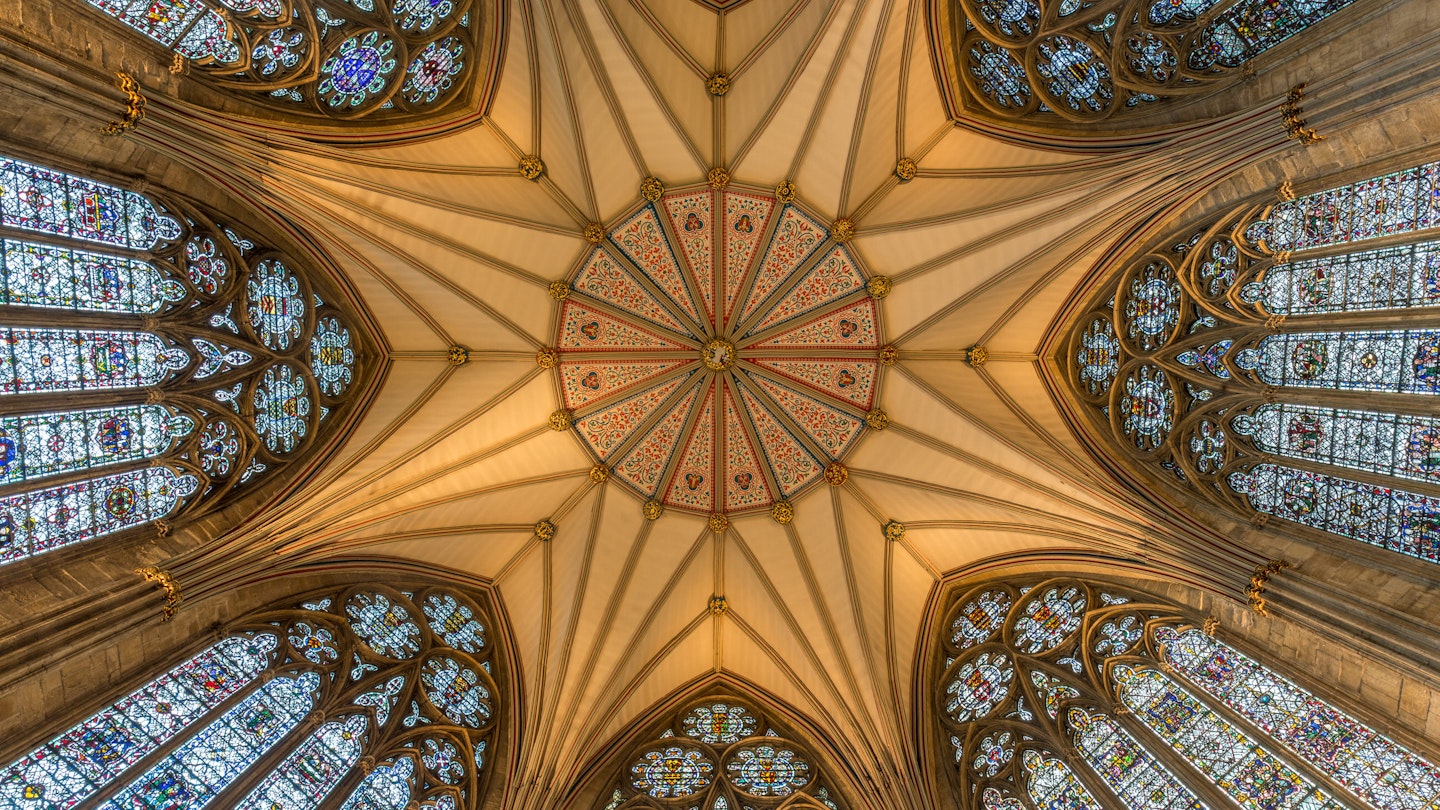Nowhere in England packs as much historical might into as small a space as York. From Romans to Vikings, the city’s past is rich and diverse, with many visible reminders of its storied history. The medieval period stands out particularly due to the influential monarchs and merchants who made their indelible marks on this northern heart of England.
A thick stone wall hugs York’s ancient core, punctuated by fearsome ‘bars’ (medieval gates) guarded by wooden portcullises. Within, streets laid out by Vikings, curiously called ‘gates’ (from the Viking ‘gata’, meaning street), are surprisingly easy to navigate. These medieval traits, along with timber-framed houses, a Norman castle tower, and the gigantic 13th-century minster, define the city. Here’s how to make sense of York’s vast historical lineage on a two-day break.
Day One
Morning
York Minster serves as an excellent introduction to the city’s past, layered like an onion. Originally appropriated by the Romans as an important military base in 71AD and named Eboracum, a statue of Constantine the Great—proclaimed emperor here in 306AD—stands at the entrance. Inside, the Undercroft museum exhibits relics unearthed during emergency engineering works in the 1960s and ’70s. A glass floor reveals the remains of a Roman basilica, along with Anglo-Saxon and Viking settlements, including ornate gravestones now on display. Above these findings are the foundations of the Norman minster, forming the bedrock for the stunning Gothic structure seen today.
At the Yorkshire Museum in Museum Gardens, visitors can delve deeper into Roman Eboracum and its inhabitants, complemented by extensive exhibitions on medieval York. The garden stroll is delightful, revealing the gaunt ruins of 13th-century St Mary’s Abbey, the hulking medieval Hospitium, and Roman Multangular Tower—York’s most significant surviving Roman relic.
Afternoon
York’s businesses excel at reimagining historically significant spaces. The Perky Peacock, a cozy third-wave coffee shop next to Lendal Bridge, offers a fantastic lunch stop, residing in a 14th-century watchtower that once served as a ferry crossing.
Make the Jorvik Viking Centre your main afternoon highlight. Nestled within a modern shopping area, this center marks the site of the Coppergate archaeological dig, revealing Jorvik—York’s Viking settlement—unearthed in the 1970s. The city thrived as an international river port under Viking rule for approximately two centuries, from about 866AD, with trading connections even reaching Arabia.
Though the museum’s costumed staff might appear kitschy, the experience is educational, impressive, and immersive. A unique amusement park-style ride takes you through a vivid reenactment of a Viking settlement, highlighting the lively sounds of the city and the Old Norse language.
Evening
Experience a modern dining atmosphere at Grays Court, the oldest inhabited house in York, featuring its own walled garden that backs onto the city walls.
Day Two
Morning
Start your second day where you left off on the first—exploring York’s 2.5-mile defensive walls. A cherished tourist attraction, these walls are largely intact, completed in 1218, and offer a walk with spectacular views. All four original bars along with most interval towers remain well-preserved.
Through Micklegate Bar, which still sees British royalty entering the city today, and Monk Bar, housing museums dedicated to Henry VII and Richard III respectively, visitors can learn about the rivalries that shaped the Wars of the Roses. This civil war (1455-1485) was pivotal in the quest for the English crown, highlighting the conflict between the Houses of York and Lancaster.
Afternoon
At Monk Bar’s museums, exhibits explore not only the era’s conflicts but also life in medieval York, which was the power base of England outside London. A darker history lingers at Blossom Street, where it’s believed nuns scattered flower petals to disguise the smell of the rotting remains displayed at the gates until 1745.
Walking down The Shambles, a street adorned with leaning Tudor buildings, offers a glimpse into York’s medieval charm—a source of inspiration for J.K. Rowling’s Diagon Alley. Additionally, the Merchant Adventurers’ Hall and Barley Hall are exceptional destinations for exploring restored timber-framed structures.
Evening
Cap off your exploration at Brew York, a microbrewery taproom perfect for sampling local craft beers that showcase Yorkshire’s brewing evolution. This relaxing venue offers the ideal spot to reflect on your time-traveling journey through York’s rich historical narrative.





